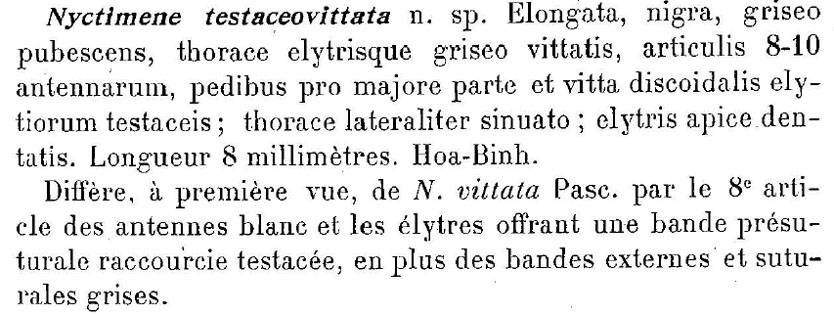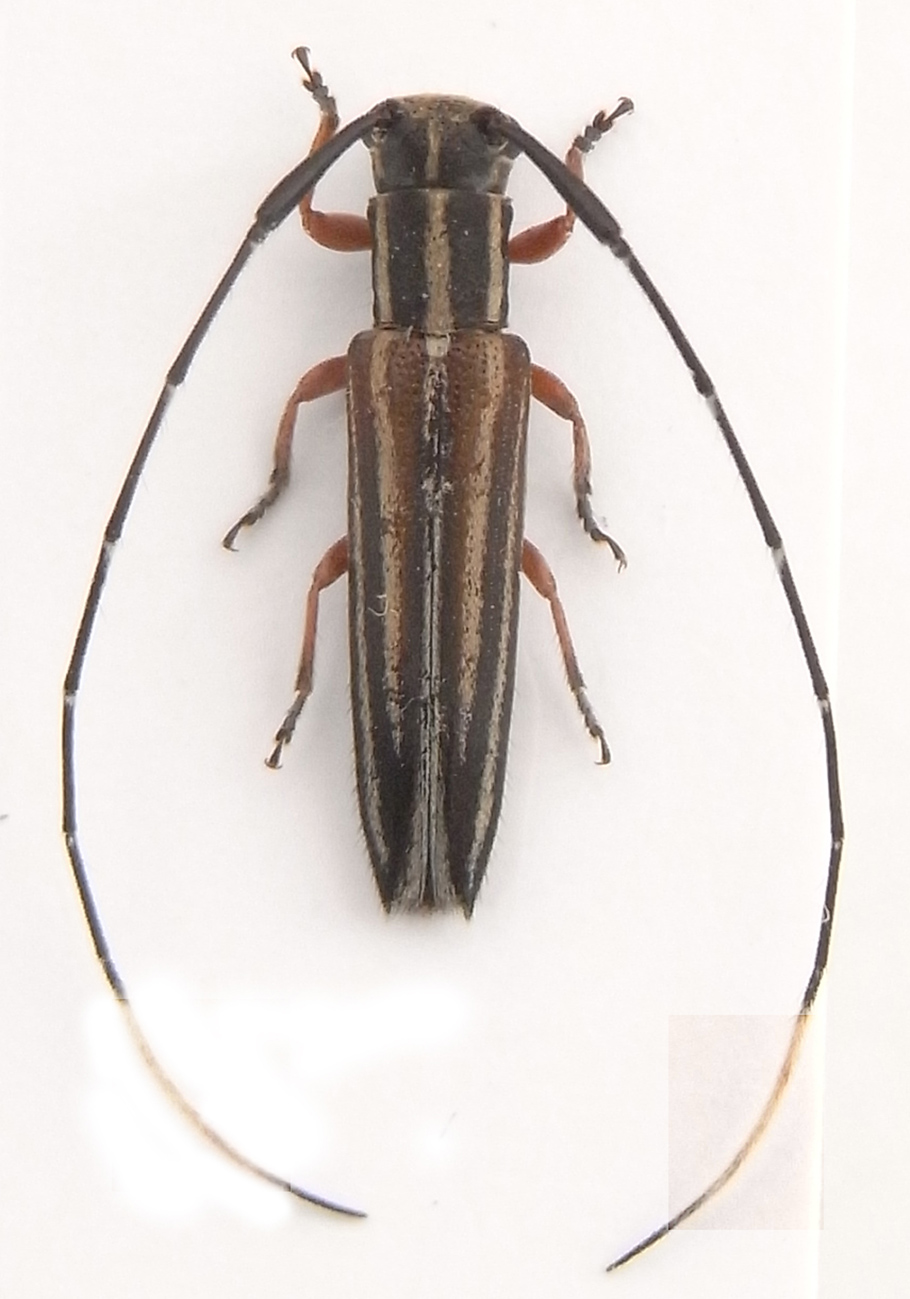| Author |
 Topic Topic  |
|
|
Xavier
Scientific Collaborator
    
France
12213 Posts |
 Posted - 21/05/2015 : 21:30:59 Posted - 21/05/2015 : 21:30:59



|

108.92 KB
10 mm.
Luang Prabang Prov., north Laos.
Nyctimenius sp. with 2/3rd of 8th, 9th and 10th antennomera white (on 20 specimens).
To compare with this one |
Edited by - Xavier on 27/02/2016 09:56:47 |
|
|
nasa
Member Rosalia
  
China
960 Posts |
 Posted - 22/05/2015 : 06:22:20 Posted - 22/05/2015 : 06:22:20



|
| Nyctimenius tristis (Fabricius, 1793) |
 |
|
|
Xavier
Scientific Collaborator
    
France
12213 Posts |
 Posted - 22/05/2015 : 06:41:00 Posted - 22/05/2015 : 06:41:00



|
| Yes, thank you, I agree, but what could be the specimen from Thailand ?? |
Edited by - Xavier on 22/05/2015 06:41:19 |
 |
|
|
nasa
Member Rosalia
  
China
960 Posts |
 Posted - 22/05/2015 : 17:41:14 Posted - 22/05/2015 : 17:41:14



|
| According to TITAN database, this species distributes in India (Tamil Nadu, Sikkim); Nepal; Burma; Thailand; China (Hainan, Yunnan); Laos (Vientiane); Vietnam (Annam,Tonkin); Malaysia (Perak); Singapore; Philippines (Luzon, Mindanao). |
 |
|
|
Xavier
Scientific Collaborator
    
France
12213 Posts |
 Posted - 22/05/2015 : 18:33:46 Posted - 22/05/2015 : 18:33:46



|
| Yes, thank you, but what about specimens from Thailand linked above ? |
 |
|
|
horshehden
Member Purpuricenus
 
Czech Republic
424 Posts |
 Posted - 02/10/2015 : 22:22:59 Posted - 02/10/2015 : 22:22:59



|
What is the problem, you have several species here...:-)
N. tristis (South India), N. testaceovittatus (Annam) and N. vittatus (Malacca) are three different species. And this is most probably another one.
Unfortunately, some Nyctimenius species are still placed in different genera, such as Pothyne sumatrensis Br. |
 |
|
|
Xavier
Scientific Collaborator
    
France
12213 Posts |
 Posted - 17/02/2016 : 13:50:45 Posted - 17/02/2016 : 13:50:45



|

81.84 KB
Yes Thomas, I still think my specimens from Laos are closer to Nyctimene testaceovittata Pic, 1926 with antennomeres 8 to 10 whitish, and totally different from my Thailand specimens.
Nyctimenius testaceovittatus (Pic, 1926) should be restored, ...if the type specimen still exist. |
Edited by - Xavier on 17/02/2016 13:54:54 |
 |
|
|
Xavier
Scientific Collaborator
    
France
12213 Posts |
 Posted - 03/11/2017 : 17:14:23 Posted - 03/11/2017 : 17:14:23



|

340.67 KB
Thailande, Phrae Province.
Ce spécimen est identique à ceux du nord ou nord-est Laos, ce qui confirme que c'est une espèce stable ( moitié de l'antennomère 8, antennomères 9 et 10 blancs). |
Edited by - Xavier on 03/11/2017 17:17:16 |
 |
|
| |
 Topic Topic  |
|


